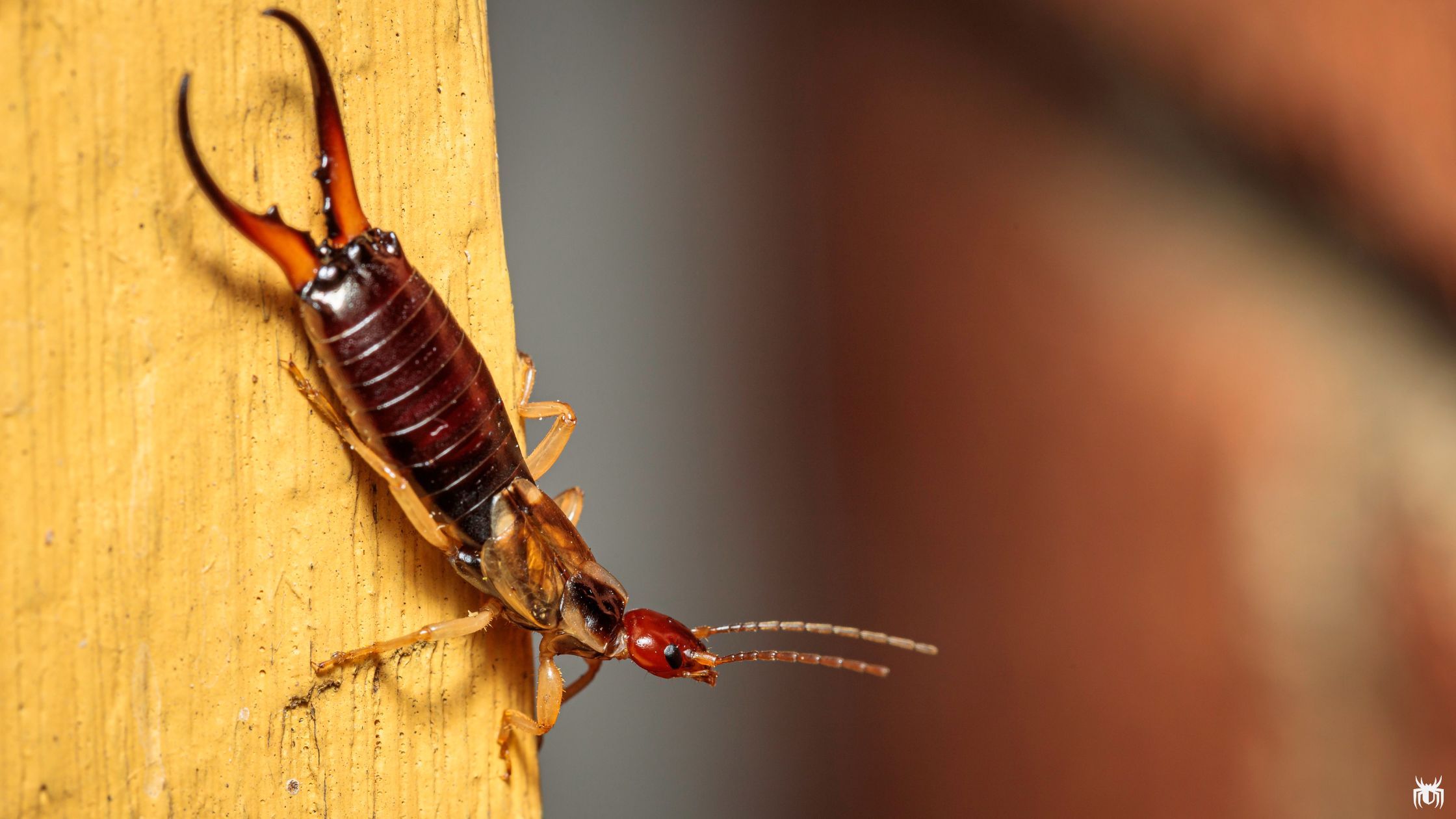All About Earwigs
Earwigs are small, nocturnal insects known for their distinctive pincers and predatory habits. They are important to manage as they can invade homes, particularly during certain seasons, and may cause damage to plants in gardens.
What are Earwigs?
Earwigs, belonging to the order Dermaptera, are characterized by their pincers or forceps on the end of their abdomen. Common species include the European earwig (Forficula auricularia) and the brown earwig (Euborellia annulipes).
Earwigs are generally nocturnal and are known for their ability to hide in crevices during the day. They feed on a variety of organic matter, including plants and other insects.
How to Identify Earwigs
- Appearance:
- Size: Typically 5 to 25 mm long
- Body Shape: Flattened and elongated
- Color: Usually reddish-brown to dark brown
- Distinctive Features:
- Pincers: Pronounced pincers or forceps at the end of the abdomen, used for defense and capturing prey
- Wings: Some species have wings, but they are rarely used for flight
- Antennae: Long, segmented antennae
Similar Pests: Earwigs can be mistaken for silverfish or cockroaches, but their pincers and body shape are distinctive. Unlike silverfish, earwigs have pincers, and they differ from cockroaches by their body shape and behavior.
Activity and Seasonality
Active Seasons: Earwigs are most active during warm, moist conditions, typically in late summer and early fall.
Lifecycle: The lifecycle of an earwig includes egg, nymph, and adult stages. Eggs are laid in the soil, and nymphs resemble adults but lack fully developed wings. They mature through several molts before reaching adulthood.
Where to Find Earwigs in or Around Your House
- Common Habitats: Earwigs are often found in damp areas such as under mulch, leaves, or stones. They can invade homes, especially in areas with high humidity or where they can find shelter.
- Specific Hiding Spots: Inside homes, earwigs may be found in dark, damp places like basements, bathrooms, and under kitchen appliances. Outside, they prefer shaded and moist environments.
How to Get Rid of Earwigs
- Immediate Action: Remove any sources of moisture and relocate potential hiding spots like mulch or wood piles away from the house.
- Professional Treatments: Pest control services can offer treatments such as insecticide applications and pest-proofing measures.
- DIY Methods: Homeowners can use traps, such as rolled-up newspapers or commercial traps, to catch earwigs. Reducing moisture around the home and sealing entry points can also help control infestations.
How to Prevent Earwigs
- Seal Entry Points: Close gaps and cracks around doors, windows, and foundations.
- Reduce Moisture: Keep areas around your home dry, as earwigs are attracted to damp environments.
- Proper Ventilation: Ensure good ventilation in basements and crawl spaces to prevent excess moisture.
- Regular Cleaning: Clean and remove debris from around the home, especially in areas where earwigs might hide.
- Proper Yard Care: Keep mulch and garden debris away from the foundation of your home.
- Repair Leaks: Fix any leaks in plumbing or roofing that could create damp environments.
- Monitor and Inspect: Regularly inspect your home for signs of earwigs and address any potential issues promptly.
- Consult a Pest Control Expert: For persistent infestations or severe cases, contact a pest control professional to effectively manage and eliminate earwig problems.
Conclusion
Earwigs, with their distinctive pincers and preference for moist environments, can be a nuisance if they invade your home or garden. Proper identification, immediate action, and preventive measures are key to managing these pests effectively.
If you’re dealing with an earwig infestation or need assistance with pest control, contact Pest Control Consultants today for a free consultation and effective treatment plan.
